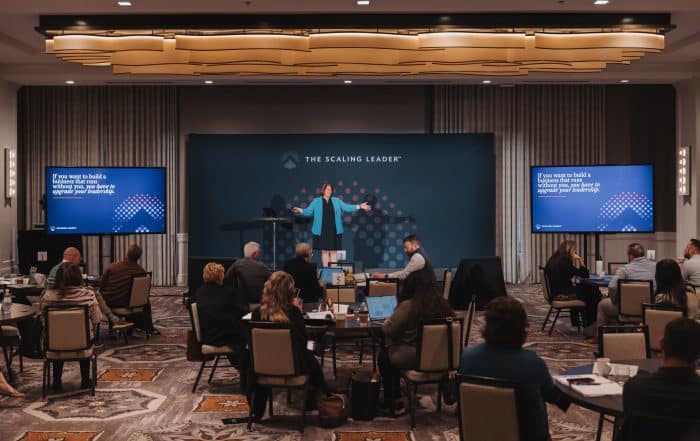Do you set company goals, but then struggle to find the time to fit them in? Do you feel like you and your team are always working “in the business” instead of “on the business?” If so, you’re not alone. It’s common for the urgent to outweigh the important. But you don’t want to be like everyone else – you want to figure out how to get out of the day-to-day issues and focus on your important goals and priorities. And you want your team to do the same.
So, how do you make sure important, but not necessarily urgent, goals and priorities get accomplished?
Culture.
What? Before you think I just mixed up my blog posts, stay with me. Just as habits automate people, culture automates organizations. When it comes to goal achievement and focusing on priorities – automation comes through the behavioral aspects of your culture. We often think of culture as our shared purpose, values, and vision. And it is – but behaviors are another big part of culture.
Establishing a consistent meeting cadence is a cultural behavior that will automate communication, alignment, and clearing roadblocks. When you and your team know the plan, align around the priorities, and then regularly solve the issues that come up along the way, you’ve practically got your goal achievement on auto-pilot.
As our business grew, this aspect of our culture became increasingly important. When I was leading fewer people, communication, alignment, and solving problems happened very organically. Everyone knew what was going on, I could casually make announcements and share updates, and when problems came up we solved them on the fly. But as we added more people, departments, and moving parts, I quickly realized I needed a more consistent and intentional meeting cadence woven into our culture.
Here’s what that looks like for us:
- Company-Wide Meetings – We bring our entire team together in-person every quarter for a 1-2 day meeting. The purpose of these quarterly events is to:
- Reinforce our vision, purpose, and values
- Share results from the prior quarter and priorities for the next quarter
- Cultivate learning and growth through personal or professional development
- Nurture relationships among our team members through fellowship and fun
- Departmental/Leadership Meetings – Each leader meets with their team for a 25-minute weekly meeting. Leadership teams also meet for 80 minutes on a bi-weekly basis. These meetings are virtual and the purpose is to:
- Celebrate personal and professional wins from the prior week
- Share news or updates
- Communicate individual and team priorities for the week and shuffle resources, if needed
- Solve problems, present recommendations, or seek feedback on ideas/opportunities (Leadership Teams only)
- One-on-One Meetings – Each people leader meets with each of their direct reports on a bi-weekly or monthly basis for 25 minutes (50 minutes for new hires/promotions). These meetings are usually virtual and the purpose is to provide:
- Clarity around the team member’s role
- Accountability for commitments and expectations
- Coaching and feedback
- Cascading communication from other levels within the company
I know what you’re thinking. That’s A LOT of meetings! I get it. But here’s the thing – you’re already spending a lot of time in ad hoc meetings, meetings that should have been emails, emails that should have been meetings, and solving the same problems repeatedly. These meetings replace all of that with less stress, more efficiency, and greater outcomes. But you don’t have to add all of these meetings at once. We recommend starting with departmental and/or leadership meetings. You can use our free Team Meeting Agenda Template to get started.
When you establish a meeting cadence, you’re automating goal achievement by keeping everyone on the same page, moving forward, and solving issues that come up along the way. You and your team will change your behaviors. Those behaviors change your culture. And your culture automates your organization.
If you’re interested in more productivity tools, check out our Full Focus Planner Training!
ABOUT THE AUTHOR
Courtney De Ronde
Relevant Posts
Learn What Your Business Needs Most to Unlock Faster Growth
Your business relies on four key areas, or centers of intelligence, to thrive. Take the free Business Intelligence Grader to see how you score across financial, leadership, productivity, and human intelligence and learn where to focus to drive greater results.
Your business relies on four key areas, or centers of intelligence, to thrive. Take the free Business Intelligence Grader to see how you score across financial, leadership, productivity, and human intelligence and learn where to focus to drive greater results.



